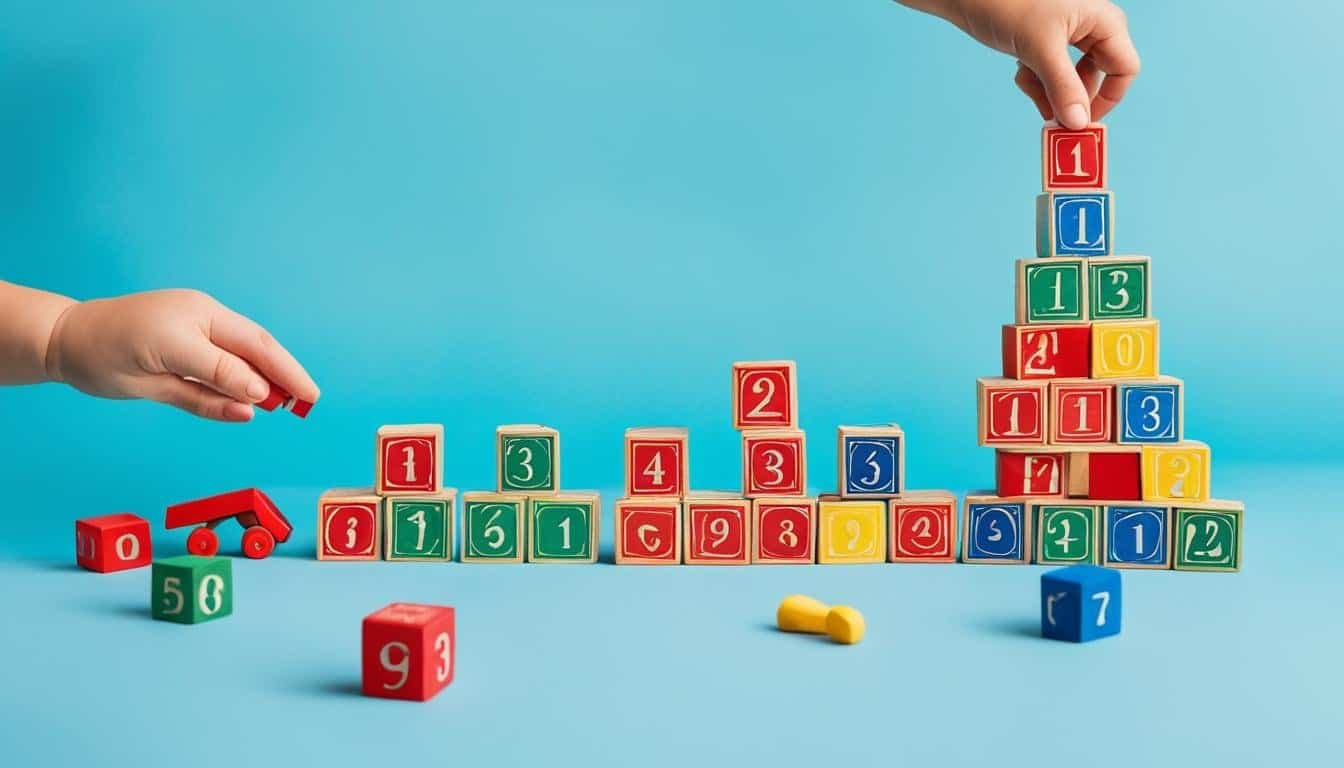Toys for Fine Motor Skills
Fine motor skills are crucial for a child’s development, as they involve the coordination and control of the small muscles in the wrists, hands, and fingers. These skills are necessary for tasks such as self-feeding, dressing, writing, and drawing. Incorporating toys that support fine motor skills into playtime can further enhance a child’s development in this area. Here are some of the best toys for fine motor skills based on expert recommendations and user reviews.
Key Takeaways:
- Choose toys that promote fine motor skills to support your child’s development.
- Engage your child in activities that require sorting, counting, stacking, and manipulating objects.
- Provide age-appropriate toys that challenge and enhance your child’s fine motor abilities.
- Consider toys that offer educational and sensory benefits in addition to fine motor development.
- Continue supporting fine motor skills as your child grows older with toys that require intricate movements and coordination.
Fine Motor Skills Toys for Babies
Even from birth, babies start to practice their fine motor skills through grabbing and exploring objects. While their natural curiosity facilitates their development in this area, parents can enhance their fine motor skills by providing appropriate toys. Toys that promote parent-child interaction and are age-appropriate can support a baby’s fine motor development.
Here are some examples of fine motor skills toys for babies:
- Flip the flap books
- Rattles
- Stacking rings
- Sensory balls
- Stacking cups
- Busy boards
- Blocks
- Crayons
- Bead mazes
- Shape sorters
- Fine motor hedgehogs
These toys provide opportunities for babies to practice their fine motor skills while engaging in play. They help develop hand-eye coordination, object manipulation, and finger dexterity.
These toys not only contribute to the physical development of fine motor skills but also stimulate cognitive and sensory processing abilities. By playing with these toys, babies can explore different shapes, textures, colors, and sounds, further enhancing their overall sensory and cognitive development.
Fine Motor Skills Toys for Toddlers and Preschoolers
As toddlers and preschoolers continue to develop their fine motor skills, it is important to provide them with toys that challenge and enhance their abilities. These toys not only promote fine motor skills but also offer educational and sensory benefits.
- Hide and Squeak Eggs
- Latch Boards
- Busy Gears
- Shape Sorting Cubes
- Fine Motor Owls
- Piggy Banks
- Activity Cubes
These toys engage children in activities such as sorting, counting, stacking, and manipulating objects. By encouraging hands-on exploration, they help strengthen the muscles in their wrists, hands, and fingers, improving their manual dexterity and coordination.
“Fine motor skills toys provide children with opportunities to practice and refine their grasping, pinching, and manipulating abilities. Through play, they enhance their hand-eye coordination, concentration, and problem-solving skills.” – Dr. Jessica Klein, Child Development Specialist
Parents play a vital role in selecting developmentally appropriate toys for their toddlers and preschoolers. When choosing fine motor skills toys, it is essential to consider their age and skill level. Additionally, opt for toys that are engaging, safe, and made of high-quality materials.
| Toy Name | Age Range | Key Features |
|---|---|---|
| Hide and Squeak Eggs | 1-3 years | Colorful eggs that crack open, revealing different shapes and faces |
| Latch Boards | 2-4 years | Boards with various locks and latches for children to practice fine motor movements |
| Busy Gears | 2-5 years | Interlocking gears that children can manipulate and connect to create moving patterns |
| Shape Sorting Cubes | 2-4 years | Cubes with different shapes that fit into corresponding holes, encouraging shape recognition and fine motor skills |
| Fine Motor Owls | 3-5 years | Owl-themed toy with various activities like stacking, threading, and turning gears |
| Piggy Banks | 3-6 years | Colorful piggy banks that require children to place coins through a slot, improving hand-eye coordination and fine motor control |
| Activity Cubes | 3-6 years | Cubes with multiple sides featuring different activities, including shape sorting, bead threading, and maze challenges |
Through these toys, toddlers and preschoolers can enjoy playing while honing their fine motor skills and expanding their cognitive abilities. By providing engaging and developmentally appropriate toys, parents can support their children’s growth in these essential areas.
Fine Motor Skills Toys for Older Children
As children grow older, it is important to continue supporting their fine motor skills development. Fine motor skills are essential for tasks like writing, drawing, and manipulating objects. By providing toys that require intricate movements and coordination, you can help further refine their skills while keeping them engaged and entertained.
Toys that require intricate movements and coordination can help further refine the fine motor skills of older children.
Here are some examples of fine motor development toys that are perfect for older children:
| Toy | Description |
|---|---|
| Bead kits | These kits come with various beads and strings, allowing children to create beautiful jewelry while improving their hand-eye coordination. |
| Building sets | Building sets, such as Lego or magnetic blocks, require precise hand movements and spatial awareness, which promote fine motor skills. |
| Puzzles | Engaging in puzzles not only enhances problem-solving skills but also helps with hand dexterity and manipulation. |
| Jigsaw puzzles | Completing jigsaw puzzles involves picking up and fitting together small pieces, resulting in improved fine motor coordination. |
| Fine motor gardens | These interactive playsets often include tools like tweezers and tongs to enhance hand strength and coordination while planting and caring for miniature gardens. |
| Fine motor kits | Specialized kits designed to develop fine motor skills may contain various activities like threading, lacing, and stacking, promoting finger dexterity and precision. |
By engaging with these fine motor toys, older children can continue to improve their coordination, concentration, and manual dexterity while having fun.
Conclusion
Toys for fine motor skills are essential for supporting a child’s development in this area. By providing age-appropriate and engaging toys, parents can help their children refine their fine motor skills while having fun. The best toys for fine motor skills mentioned in this article have been recommended by experts and well-received by parents, making them excellent choices for promoting fine motor skills.
Whether it’s for babies, toddlers, preschoolers, or older children, there are plenty of options available to support fine motor development. From flip the flap books and stacking cups for babies, to hide and squeak eggs and shape sorting cubes for toddlers and preschoolers, to bead kits and puzzles for older children, each toy offers unique challenges that stimulate fine motor skills while keeping children engaged and entertained.
Investing in fine motor skills toys not only fosters physical dexterity but also enhances cognitive and sensory development. These toys provide a foundation for future activities such as writing, drawing, and self-care tasks. Parents can feel confident that by introducing these best toys for fine motor skills into playtime, they are helping their children build essential skills for life.







